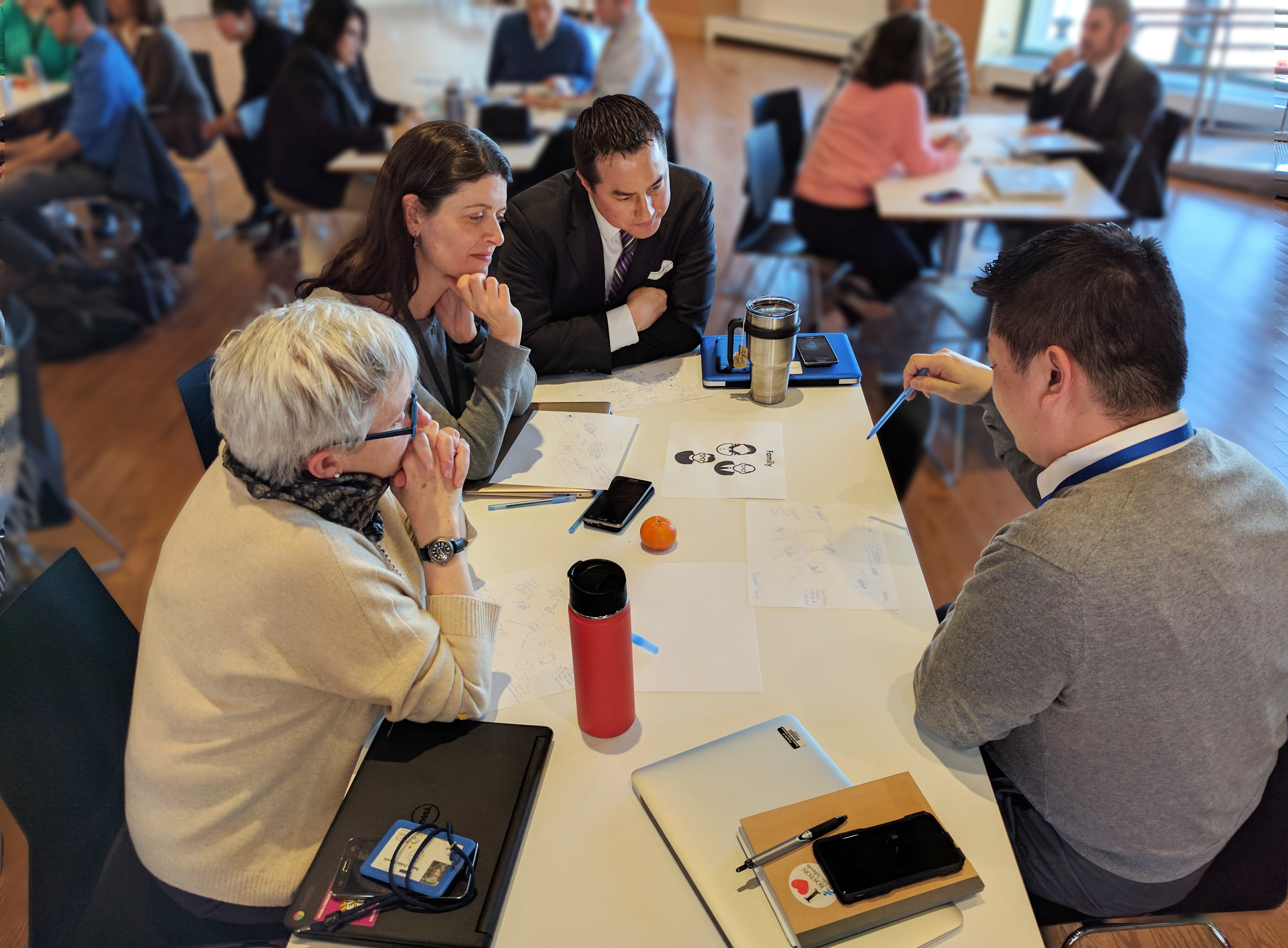Boston Public Schools Theory of Action
Client: Boston Public SchoolsVISIONING AND STORYTELLING
How can we help stakeholders see their role in changing how a system works?

Boston Public Schools Superintendent Tommy Chang had a vision for change in the district, centered on graduating college- and career-ready young adults by empowering schools as the unit of change. However, stakeholders (from administrative teams to external partners) had a hard time seeing how their work fit into this vision.
Dr. Chang’s first 100 days included a school listening tour and a culling of the district’s rather stunning 150+ active projects. This analysis resulted in the District’s Strategic Implementation Plan, outlining 30-odd workstreams. Despite this work, the District remained challenged by the degree of deep, cross-functional change that was required to close opportunity and achievement gaps and resolve operational challenges.
We partnered with Dr. Chang and his leadership team to coalesce his Theory of Action, drawing clear throughlines from vision to opportunities to concrete priorities. Through our work together, two key levers emerged.
First, the system vision outlines a central logic to underpin system behaviors, from Central Office through to the classroom. “District as a Classroom” describes a vision premised on teaching and learning as the system’s core, creating a self-similar system that takes the ideal practices, behaviors and values of the classroom and scales these to every level in the system.
Second, those 150+ projects became 6 priorities. These priorities highlighted the projects of highest leverage that required the district to be cross-functional in how it approached the work and created a hierarchy between departmental workstreams and key district objectives.
This map of the District’s theory of action made visible the connective threads between vision, mission, and action. It allowed internal middle managers and school leaders to connect their work into a broader ambition. And it was a forcing mechanism for leadership’s prioritization of the complex, cross-departmental work that was necessary to move the system.
Dr. Chang’s first 100 days included a school listening tour and a culling of the district’s rather stunning 150+ active projects. This analysis resulted in the District’s Strategic Implementation Plan, outlining 30-odd workstreams. Despite this work, the District remained challenged by the degree of deep, cross-functional change that was required to close opportunity and achievement gaps and resolve operational challenges.
We partnered with Dr. Chang and his leadership team to coalesce his Theory of Action, drawing clear throughlines from vision to opportunities to concrete priorities. Through our work together, two key levers emerged.
First, the system vision outlines a central logic to underpin system behaviors, from Central Office through to the classroom. “District as a Classroom” describes a vision premised on teaching and learning as the system’s core, creating a self-similar system that takes the ideal practices, behaviors and values of the classroom and scales these to every level in the system.
Second, those 150+ projects became 6 priorities. These priorities highlighted the projects of highest leverage that required the district to be cross-functional in how it approached the work and created a hierarchy between departmental workstreams and key district objectives.
This map of the District’s theory of action made visible the connective threads between vision, mission, and action. It allowed internal middle managers and school leaders to connect their work into a broader ambition. And it was a forcing mechanism for leadership’s prioritization of the complex, cross-departmental work that was necessary to move the system.

Our mission is to use design to reduce structural inequity in America. Agncy is a 501(c)(3) nonprofit organization. © 2025 Agncy Design Inc.
augusta@agncy.org
Boston, Massachusetts
Boston, Massachusetts
